Choosing and using a mask properly
A mask is a type of protective mask used to cover the nose and mouth area to help prevent and protect the wearer from being infected with bacteria, diseases, and dust through the respiratory tract.
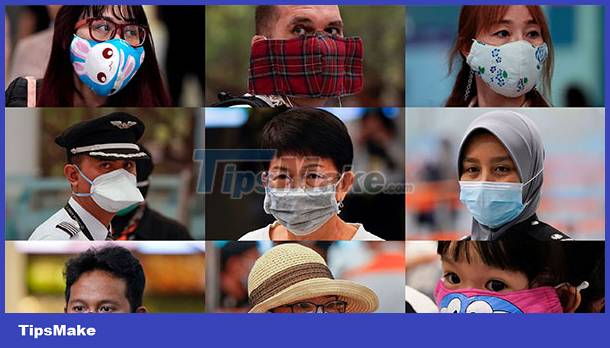 Choosing and using a mask properly
Choosing and using a mask properly
Common types of masks
Sun protection mask
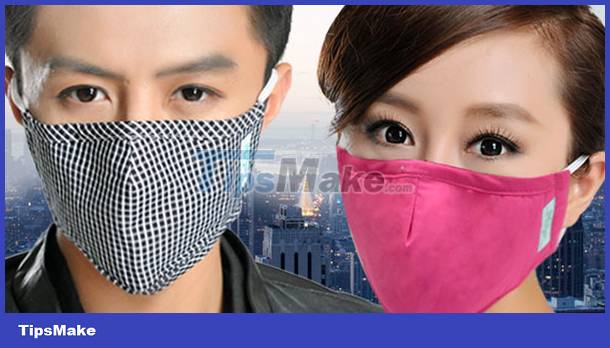 Sun protection masks are made of fabric
Sun protection masks are made of fabric
Sunshade masks are made of cloth with an ear strap, usually only have the effect of shading, blocking large-sized dust, can prevent the smell of car smoke, and if the wearer does not disinfect before use, it will easily infected with skin infections, respiratory diseases, .
Masks made of ordinary cloth do not have the effect of filtering toxic gases such as smoke, gasoline, oil, coal, etc.
Medical masks
 Medical masks made of non-woven fabrics or special materials
Medical masks made of non-woven fabrics or special materials
Medical masks made of non-woven fabrics or special materials, with many folds, help to fit tightly around the nose and mouth, effectively preventing large particles of dust or crystals from entering the mouth and nose.
Medical masks are often used in medical facilities, especially those who do surgical and dissection jobs.
Masks containing activated carbon
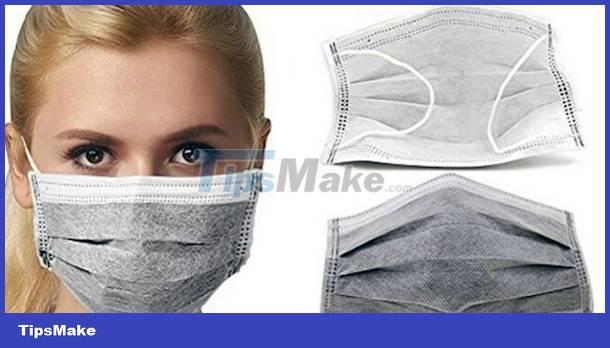 Masks containing activated carbon
Masks containing activated carbon
The structure of the active mask has 3-4 layers, of which 2-3 layers of antibacterial filter and one layer of activated carbon filter work to prevent bacteria, dirt and odors from the outside air.
The mask contains activated carbon with the ability to absorb and filter dust, polluted smoke, bacteria, . from the external environment entering the mouth and nose.
Premium masks
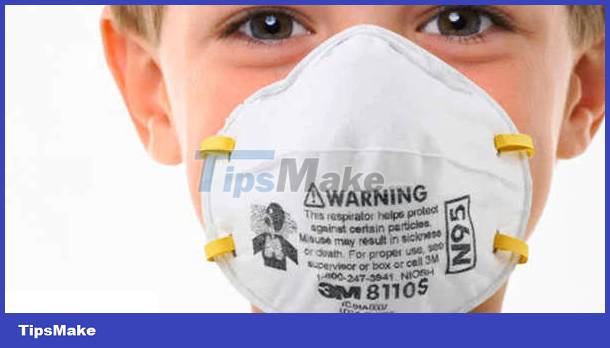 N95 high-grade mask
N95 high-grade mask
When it comes to high-end masks, people often refer to N95, N99, P95 masks, etc. While medical masks mainly help the wearer avoid large-sized dust and splashes, N95, N99, P95, . if used correctly, can help protect the wearer better.
The name N95, N99, P95, . comes from the filtering ability of this mask.
- N - Short for Not Resistant to oil , which means Not resistant to oily substances.
- P - Short for Oil Proof , means Resistant to Oily Substances.
- 95% or 99% - Means at least 95% or 99% of the microscopic particulate matter in the air is filtered out.
Choose a mask that suits your needs
After understanding the uses of each different mask, you can now choose which type of mask is suitable for your needs to protect your health and avoid waste.
- If you just need to cover the sun or prevent the usual daily smoke and dust when traveling, a reusable cloth mask will be the choice for you.
- If you are afraid of having to wash cloth masks after each use, you can use paper masks, disposable medical masks and then discard them.
- Masks containing activated carbon are suitable for use in environments with a lot of smoke, dust, odors, .
- High-grade masks should be used in necessary cases such as when entering heavily polluted areas to avoid waste.
- Medical masks should be purchased at pharmacies or medical equipment stores, supermarkets, . to avoid buying fake fakes of poor quality.
- In addition, you will be advised by health agencies and organizations, which type of mask to use in case of necessity.
How to choose a mask that fits your face
Ordinary masks do not require a tight fit, so there are only two sizes for adults and children, very easy for you to choose. High-end masks require tight coverage and must not have gaps, so you must choose the right size for your face.
| Reference table on how to choose mask size according to body weight | ||
| Age | Weight | Size |
| Children from 1.5 - 4 years old | 6 - 10kg | XS |
| Children from 5 to 10 years old | 11 - 32kg | S |
| Adult | 33 - 64kg | USA |
| Adult | 65 - 89kg | OFFER |
| Adult | 90kg | XL |
Use a mask properly
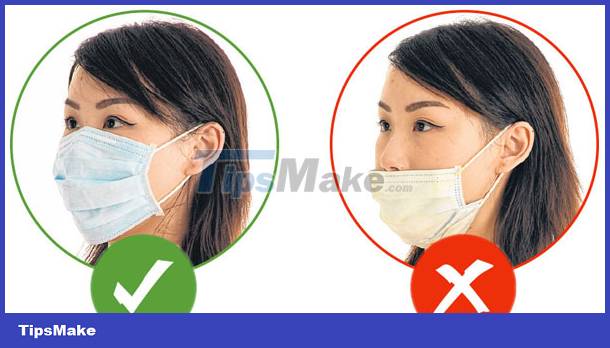 When wearing a mask, it must cover the entire nose and mouth area
When wearing a mask, it must cover the entire nose and mouth area
- When wearing a mask, it must cover the entire nose and mouth. The strap is hooked to the ears or around the head.
- Medical masks must be worn according to the manufacturer's instructions. Usually, the darker side will be on the outside and the lighter side will be on the inside.
- If you can't distinguish the color, pay attention to the side with the manufacturer's name or Logo printed on the outside.
- If the mask needs to be closed, the mask will have a thin plastic or metal bar attached, when wearing it, use your finger to press it to create a shape that hugs the bridge of your nose to keep it closed.
- The mask can be pleated to help you stretch it to fit your face when needed.
- Cloth masks are reusable and must be washed regularly every day or after use.
- Medical masks can only be used once, then put in a trash can with a safe lid and do not reuse.
- Some types of high-end masks can be used many times.
- While using the mask, you should not touch the mask, especially the nose and mouth area because this place is very dirty and you can get bacteria on your hands. Do not use a mask that has been torn, dirty, .
The above are general instructions for use, you need to carefully read the manufacturer's instructions before using for each individual mask.
You should read it
- Extremely creative room ideas around the world
- Differentiate between fake 3M masks
- How to prevent coronary disease through the Vietnam Health application
- How to create a Facebook avatar wearing a Covid-19 season mask
- Homemade face masks: Why they may not protect you from coronavirus
- Be careful when wearing high heels
- Close-up of how the medical mask production line operates?
- What types of masks are resistant to fine dust?
May be interested
- Discover the LG PuriCare 2 air filter mask
 with the advantages of effective prevention of harmful substances in the environment, convenience in use, the 2nd generation lg puricare air filter mask is a technology product that attracts users.
with the advantages of effective prevention of harmful substances in the environment, convenience in use, the 2nd generation lg puricare air filter mask is a technology product that attracts users. - iOS 15.4 Beta can unlock Face ID even when wearing a mask, no Apple Watch required
 the newly released ios 15.4 beta has added a new feature designed to allow users to use face id even while wearing a mask.
the newly released ios 15.4 beta has added a new feature designed to allow users to use face id even while wearing a mask. - Instructions on how to make a unique Halloween paper mask
 with just a few simple steps and easy-to-find widgets, you can own unique 1-0-2 masks to prepare for a halloween night out with your friends.
with just a few simple steps and easy-to-find widgets, you can own unique 1-0-2 masks to prepare for a halloween night out with your friends. - A mask asteroid flies across the Earth
 signs of the covid-19 pandemic are everywhere and even astronomers have discovered a 'mask' in space.
signs of the covid-19 pandemic are everywhere and even astronomers have discovered a 'mask' in space. - What you need to do to unlock Face ID even when wearing a mask
 wearing a mask and unlocking iphone with face id is a difficult experience. that was before, but now you can easily open face id with a simple operation.
wearing a mask and unlocking iphone with face id is a difficult experience. that was before, but now you can easily open face id with a simple operation. - How to color faster in Krita using Colorize Mask
 many users do not know that krita has a tool with the ability to reduce coloring time to just a few minutes.
many users do not know that krita has a tool with the ability to reduce coloring time to just a few minutes. - Do you know how to wear a watch so beautiful?
 there are quite a few people who pay attention to how to wear the watch properly, suitable for themselves. if you know how to choose the right type of watch for you and how to wear it, it will enhance the luxury for the user.
there are quite a few people who pay attention to how to wear the watch properly, suitable for themselves. if you know how to choose the right type of watch for you and how to wear it, it will enhance the luxury for the user. - How to unlock iPhone when wearing a mask with iOS 15.4
 how to unlock iphone when wearing a mask with ios 15.4, ios 15.4 allows to open face id on iphone even when wearing a mask. the following article will guide you how to unlock iphone when wearing a mask
how to unlock iphone when wearing a mask with ios 15.4, ios 15.4 allows to open face id on iphone even when wearing a mask. the following article will guide you how to unlock iphone when wearing a mask - Top 8 tips for buying and using a watch
 after researching information, choosing to buy a watch is complete, we have one more issue to pay attention to, that is: how should i wear a watch? let's find out in this article together.
after researching information, choosing to buy a watch is complete, we have one more issue to pay attention to, that is: how should i wear a watch? let's find out in this article together. - What is a subnet mask?
 the subnet mask is a 32-bit address used to distinguish between the network address and the host address in the ip address. the subnet mask determines which part of the ip address is the network address and the host address.
the subnet mask is a 32-bit address used to distinguish between the network address and the host address in the ip address. the subnet mask determines which part of the ip address is the network address and the host address.










 How to use and maintain cement tiles
How to use and maintain cement tiles Tips for using soap in some housework
Tips for using soap in some housework How to get rid of odors
How to get rid of odors Guide to wine selection
Guide to wine selection Detergents available at home
Detergents available at home How to choose and care for ceramics
How to choose and care for ceramics